Japan History: Date Masamune
Date Masamune
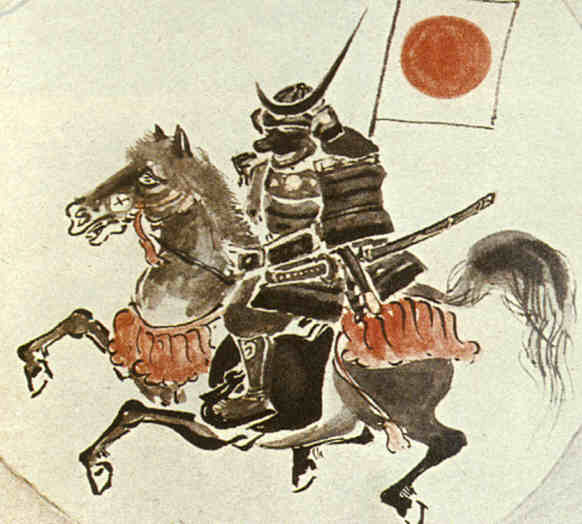
Photo Credits: samurai-archives.com
Date Masamune (伊達 政宗, September 5, 1567 – June 27, 1636) was a regional ruler of Japan’s Azuchi–Momoyama period (last part of the Sengoku period) through early Edo period. Heir to a long line of powerful daimyōs in the Tōhoku region, he went on to found the modern-day city of Sendai. An outstanding tactician, he was made all the more iconic for his missing eye, as Masamune was often called dokuganryū (独眼竜), or the “One-Eyed Dragon of Ōshu”.
Early life
Date Masamune was born as Bontemaru (梵天丸) in Yonezawa Castle (in modern Yamagata Prefecture). He was the eldest son of Date Terumune, a lord of the Rikuzen area of Mutsu, and Yoshihime, a daughter of Mogami Yoshimori, daimyo of the Dewa province. He recieved the name Tojirou (藤次郎) Masamune in 1578, and the following year he married Megohime, the daughter of Tamura Kiyoaki, lord of Miharu castle, in Mutsu Province. At the age of 14, in 1581, Masamune led his first campaign, helping his father fight the Sōma family. In 1584, at the age of 17, Masamune succeeded his father, Terumune, who chose to retire from his position as daimyō.
Masamune’s army was recognized by its black armor and golden headgear. Masamune himself is known for a few things that made him stand out from other daimyōs of the time. In particular, his famous crescent-moon-bearing helmet won him a fearsome reputation.
As a child, smallpox robbed him of sight in his right eye, though it is unclear exactly how he lost the organ entirely. Various theories behind the eye’s condition exist. Some sources say he plucked out the eye himself when a senior member of the clan pointed out that an enemy could grab it in a fight. Others say that he had his trusted retainer Katakura Kojūrō gouge out the eye for him, and this, together with his fearsome temperament, made him the ‘One-Eyed Dragon’ of Ōshu.
Military campaign
The Date clan had built alliances with neighboring clans through marriages over previous generations, but local disputes remained commonplace. Shortly after Masamune’s succession in 1584, a Date retainer named Ōuchi Sadatsuna defected to the Ashina clan of the Aizu region. Masamune declared war on Ōuchi and the Ashina for this betrayal, and started a campaign to hunt down Sadatsuna. Many clans, even formerly amicable allies, fell. In the winter of 1585, one of these allies, Hatakeyama Yoshitsugu, felt defeat was approaching and chose to surrender to the Date. Masamune agreed to accept the surrender, but on the heavy condition that the Hatakeyama give up most of their territory to the Date. This resulted in Yoshitsugu kidnapping Masamune’s father, Terumune, during their meeting in Miyamori Castle, where Terumune was staying at during the time. The incident ended with the death of Terumune, while fleeing Hatakeyama men clashed with the Date troops near the Abukuma river.
A general war ensued between the Date and Hatakeyama, the latter drawing on support from the Satake, Ashina, Soma, and other local clans. The allies marched to within a half-mile of Masamune’s Motomiya-jo, assembling some 30,000 troops for the attack. Masamune, having only 7,000 warriors, prepared a defensive strategy, relying on the series of forts that guarded the approaches to Motomiya. The fighting began on the 17th of November, and did not progress well for the Date. Three of his valuable forts were taken, and one of his chief retainers, Moniwa Yoshinao, was killed in a duel with an opposing commander. The attackers pressed towards the Seto River, which was the last obstacle between them and Motomiya. Date attempted to turn them back at the Hitadori Bridge, but was driven back. Masamune brought his remaining forces within Motomiya’s walls, and prepared for what would surely be a gallant but futile last stand. But the next morning,the main enemy contingent picked up and marched away. These were Satake Yoshishige’s men. Their lord had received word that in his absence the Satomi had attacked his lands in Hitachi. Apparently this left the allies with fewer men than they believed possible to bring down Motomiya, for they too retreated by the end of the day. This brush with utter defeat was likely a factor in turning Masamune into the renowned general he would one day be known as. In the wake of the battle, peace was struck with the Hatakeyama and Soma, although this was to prove short-lived.
In 1589, Date defeated the Soma, and bribed an important Ashina retainer, Inawashiro Morikuni, over to his side. He then assembled a powerful force and marched straight for the Ashina’s headquarters at Kurokawa. The Date and Ashina forces met at Suriagehara on 5 June when Masamune’s forces overcame the faltering Ashina ranks, breaking them. Unfortunately for the Ashina, Date men had destroyed their avenue of escape, a bridge over the Nitsubashi River, and those who did not drown attempting to swim to safety were mercilessly put to the sword.
By the battle’s end, Masamune could count something like 2,300 enemy heads in one of the more bloody and decisive battles of the Sengoku period. Masamune then proceeded to make the rich Aizu domain his base of operations.
However, this would be Date Masamune’s last expansionist adventure.
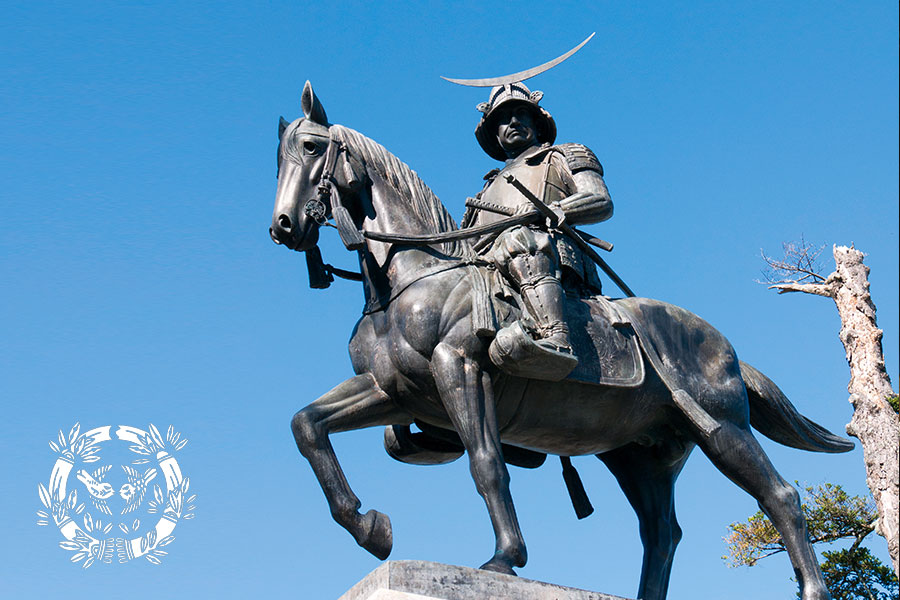
Photo credits: wattention.com
Statua di Date Masamune nella città di Sendai sulle rovine del Castello di Sendai,
Service under Toyotomi Hideyoshi and Tokugawa Ieyasu
In 1590, Toyotomi Hideyoshi seized Odawara Castle and compelled the Tōhoku-region daimyōs to participate in the campaign. Although Masamune refused Hideyoshi’s demands at first, he had no real choice in the matter since Hideyoshi was the virtual ruler of Japan. However, the delay infuriated Hideyoshi. Expecting to be executed, Masamune, wore his finest clothes showing no fear in facing his angry overlord. But Hideyoshi spared his life, saying that “He could be of some use”.
Following the conclusion of the siege, Masamune was forced to relinquish his newly won holdings in Aizu and was give Iwatesawa and the surrounding lands. Lands that would have earned him less, though. Masamune moved there in 1591, rebuilt the castle renaming it Iwadeyama, and encouraged the growth of a town at its base. Masamune stayed at Iwadeyama for 13 years and turned the region into a major political and economic center.
He and his men served with distinction in the Korean invasions under Hideyoshi and, after Hideyoshi’s death, he began to support Tokugawa Ieyasu, apparently at the advice of Katakura Kojūrō. For this reason Masamune was awarded with the lordship of the huge and profitable Sendai Domain, which made Masamune one of Japan’s most powerful daimyōs. Tokugawa had promised Masamune a one-million koku domain but, even after substantial improvements were made, the land only produced 640,000 koku. And most of the earnings were used to feed the Edo region. In 1604, Masamune, accompanied by 52,000 vassals and their families, moved to what was then the small fishing village of Sendai. He left his fourth son, Date Muneyasu, to rule Iwadeyama.
Masamune would turn Sendai into a large and prosperous city.
Although Masamune was a patron of the arts and sympathized with foreign causes, he was also an aggressive and ambitious daimyō. When he first took over the Date clan, he suffered a few major defeats from powerful and influential clans such as the Ashina. These defeats were arguably caused by recklessness on Masamune’s part.
Being a major power in northern Japan, Masamune was naturally viewed with suspicion. Toyotomi Hideyoshi had reduced the size of his land after his tardiness in coming to the Siege of Odawara against Hōjō Ujimasa. Later, Tokugawa Ieyasu increased the size of his lands again, but was constantly suspicious of Masamune and his policies.
Although Tokugawa Ieyasu and other Date allies were always suspicious of him, Date Masamune for the most part served both Toyotomi and Tokugawa loyally. He took part in Hideyoshi’s campaigns in Korea, and in the Osaka campaigns too. When Tokugawa Ieyasu was on his deathbed, Masamune visited him and read him a piece of Zen poetry.
Masamune was highly respected for his ethics, and a still-quoted aphorism is, “Rectitude carried to excess hardens into stiffness; benevolence indulged beyond measure sinks into weakness.”
Patron of culture and Christianity
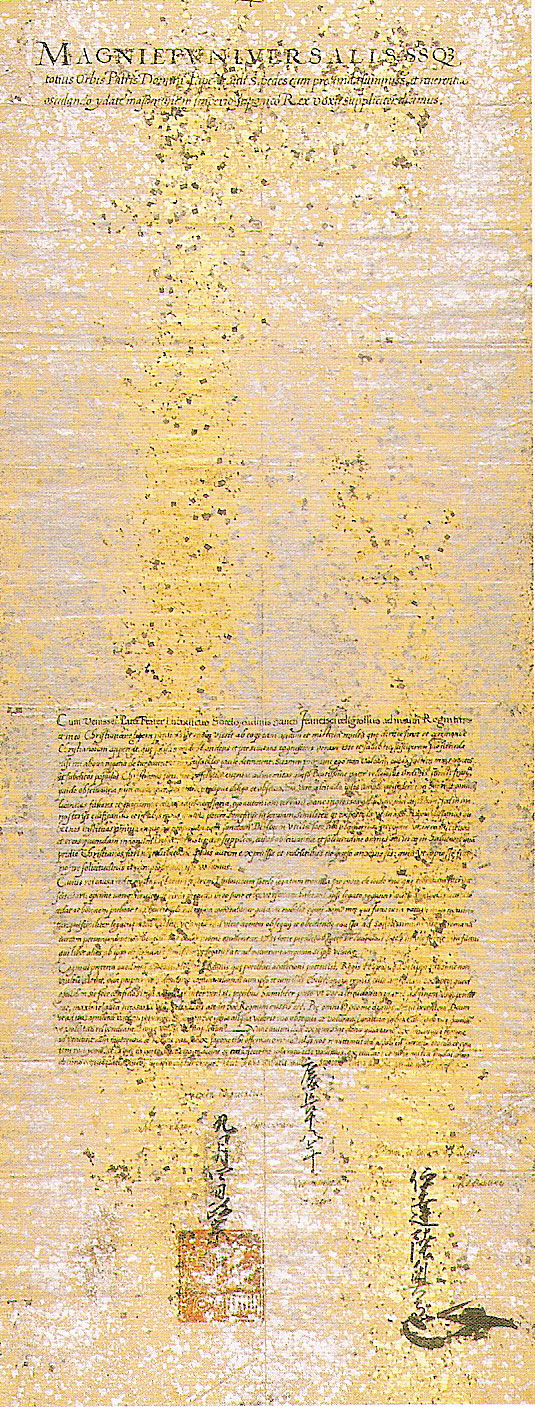
Photo Credits: wikimedia.org
Una lettera scritta da Masamune al Papa Paolo V
Masamune expanded trade in the otherwise remote, backwater Tōhoku region. Although initially faced with attacks by hostile clans, he managed to overcome them after a few defeats. In the end, he eventually ruled one of the largest fiefdoms of the later Tokugawa shogunate. He built many palaces and worked on many projects to beautify the region. For 270 years, Tōhoku remained a place of tourism, trade and prosperity. Matsushima, for instance, a series of tiny islands, was praised for its beauty and serenity by the wandering haiku poet Matsuo Bashō.
Other than being known to have encourage foreigners to come to his land, Masamune also showed sympathy for Christian missionaries and traders in Japan. In addition to allowing them to come and preach in his province, he also released the prisoner and missionary Padre Sotelo from the hands of Tokugawa Ieyasu. Date Masamune allowed Sotelo as well as other missionaries to practice their religion and win converts in Tōhoku.
Moreover, he funded and promoted an expedition to establish diplomatic relations with the Pope in Rome, even though he was likely motivated at least in part by a desire for foreign technology. In this, he was similar to other lords, such as Oda Nobunaga. For the expedition he ordered the building of the exploration ship Date Maru or San Juan Bautista, using European ship-building techniques. He sent one of his retainers, Hasekura Tsunenaga, Sotelo, and an embassy numbering 180 people on a successful voyage that included places as the Philippines, Mexico, Spain and Rome, of course. Previously, Japanese lords had never funded this sort of venture, so it was probably the first of such voyages. At least five members of the expedition stayed in Coria, Spain, to avoid the persecution of Christians in Japan. 600 of their descendants, with the surname Japón (Japan), are now living in Spain.
When the Tokugawa government banned Christianity, Masamune had to obey the law reversing his position, and though disliking it, let Ieyasu persecute Christians in his domain. However, some sources suggest that Masamune’s eldest daughter, Irohahime, was a Christian.
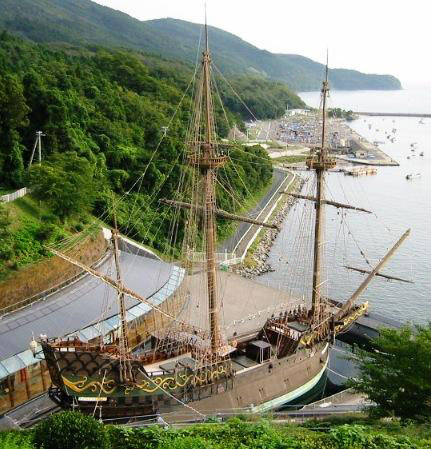
Photo credits: it.wikipedia.org
Replica del galeone Date Maru, o San Juan Bautista, a Ishinomaki, Giappone
Masamune had 16 children, two of whom were illegitimate, with his wife and seven concubines. He died in 1636 at the age of 69. In October 1974, Date Masamune’s grave was opened. Inside, along with his remains, archaeologists discovered his tachi sword, a letter box with a paulownia crest, and his armor. From the study of those remains, they determined Masamune to have stood 159.4cm tall, and having type B blood.
As legendary warrior and leader, Masamune is the character of various Japanese dramas. He was also played by the famous Ken Watanabe in the popular 1987 NHK series Dokuganryū Masamune.
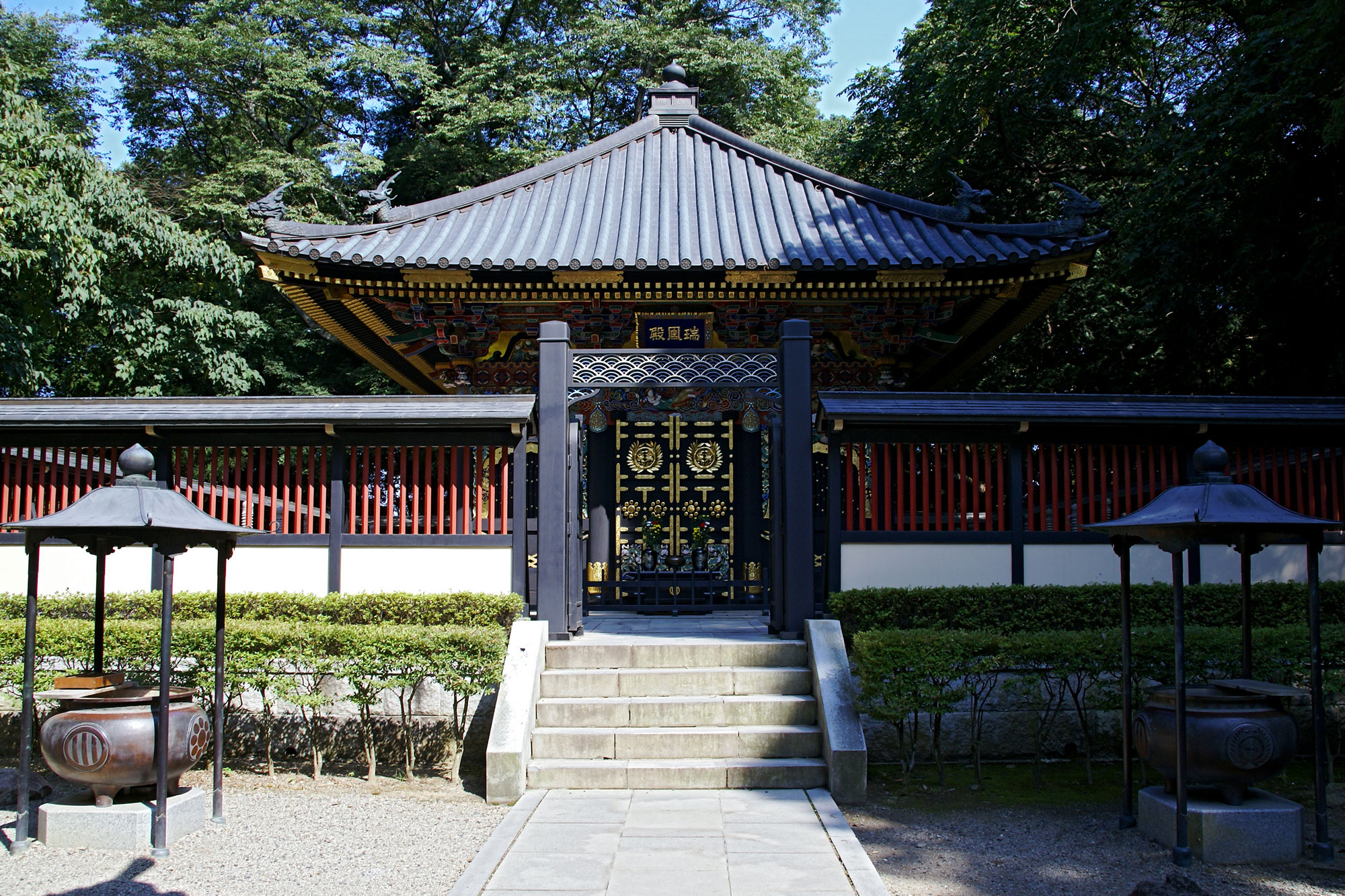
Photo credits: wikimedia.org
La tomba di Masamune al mausoleo di Zuihōden
Share this:
- Click to share on Facebook (Opens in new window)
- Click to share on Twitter (Opens in new window)
- Click to share on Tumblr (Opens in new window)
- Click to share on Pinterest (Opens in new window)
- Click to share on Telegram (Opens in new window)
- Click to share on WhatsApp (Opens in new window)
- Click to share on Reddit (Opens in new window)
- Click to print (Opens in new window)






